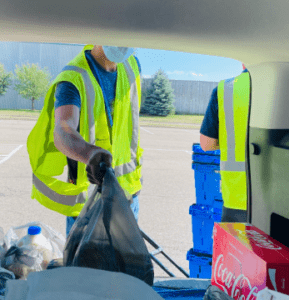How’s that Loyalty Program working for you?
Many marketers treat their loyalty program as a necessary, albeit tedious, part of their consumer communications; often with competing directives from leadership, lack of strong goals or KPIs and, of course, ever-present budget issues. But if you haven’t already done so, NOW is the time to get yours up and running (or revamped) to meet today’s consumer needs and shopping behaviors.

Yup. Now more than ever, brand loyalty is imperative to survival – and boy has it has shifted. Pandemic boredom has given people even more time online to try new brands and products. Quarantine fever has also created emotional needs. People need people – whether in person or virtually – which has given new life to the “you’ve got mail” excitement (as in “this new brand that I like just sent me an email with 30% off and addressed me by name…we’re practically besties!”).
As loyalties began to shift last spring – and are still shifting – many brands have failed to respond as quickly to new consumer mindsets. Add in the frequent changes and rules set by social platforms – not to mention metric transparency issues – and you’re spending days just trying to keep up with what you can and cannot say to your own followers (if they’re even listening).
According to eMarketer, loyalty programs are now “more important that ever, but need to be omnichannel, especially as more people are switching to ecommerce from traditional retail.” For instance, online grocery sales grew by 54% in 2020.*
In other words, keep giving love to your social platforms, but make sure you augment with loyalty messaging and other lower-funnel tactics like email to enhance all-around experience.

When starting or revamping your loyalty program, there are lots of moving parts – not to mention approval levels and red tape that can rain on your parade. Keep the following in mind while you’re writing your plan and you’ll be ready for all the questions.
Barriers to Great Loyalty Programs
1) Fighting for budget: If your program is not a stand-alone with its own KPIs, you could be sparring with the woman from social community management for program dollars. Take loyalty out of the general budget and request your own allocation. And don’t forget that adding third-party resources will chip away at your dollars. But weigh that against lack of internal knowledge or resources and consider a tiered product plan from an expert source. Starting with basic functionality and expanding as your program begins to scale is a great way to manage your budget.
2) Competing goals and directives: If you’ve got too many leaders and departments involved, you’ve got too many priorities. Set clear goals based on brand and consumer needs and build the program around them – no “takebacks” until you’ve been able to monitor and optimize for at least six months.
3) Lack of support staff and resources: Building and managing a quality, well-managed loyalty program takes work… and people hours. Any lost staff or re-allocations will reduce capacity for proper management, content, testing and analysis. Outsourcing is a great option and could be more affordable than staffing up.
4) The wrong mix of tools: Loyalty isn’t just about email and social engagement. Mobile wins the race, so you’ll need a well-built, easy-to-use, constantly updated app (for both platforms) that your customers can have at their fingertips.
5) Busy geeks: Whether you’re a large company or a start-up, your IT department may not always be there to support immediate loyalty program needs. It’s not just about licensing the right tools or design themes but being prepared if (and almost certainly when) something really goes wrong. If you don’t have a dedicated product team, don’t attempt to pass IT duties to the in-house creatives. Consider outsourcing for faster, more knowledgeable response.
6) Poor tech stack integrations: This can get complex. Depending on what integrations are involved in the tech stack, there are often a lot of moving parts. Starting off with way too much makes it difficult to set KPIs and measure success. It’s best to start out simply, then slowly introduce new tactics once a baseline is established.
7) Lack of planning for future tech: One answer is to use your loyalty program as a cool way to incent feedback via gamification. This can serve as a measurement tool to identify and rectify friction points elsewhere. In other words, reward your users for letting you know if you suck at something, and you’ll gain trust and brand loyalty.

Loyalty as Customer Service
In the end, loyalty programs are really about customer service. You can perform brand exercises and advertise all day, but to be truly memorable and build those customer relationships, you must stay top-of-mind, remain thoughtful in your communications, personalize their experience and optimize based on results. Of course, you’ll need those brand guidelines and hyper-targeted eyeballs to build the right messaging and maintain a consistent, meaningful relationship with your audience. (You’ve already got this, right?)
Revisit your Plan Quarterly
Finally, you must always be looking around the corner: What’s next? What do my customers want to see? What are the trends? What are they doing with their time? How are they responding once they get to my site? What’s converting and where? What channels are working best? What do we ditch? And most importantly, how do we prove success to our leadership team so we can earn more budget next year?
All of this might be more fodder for another blog, but we’ll stop here for now. Your best bet might just be to hire the right loyalty marketing team; one with expansive resources to make your program a huge success.
*eMarketer Retail, February 28, 2021


